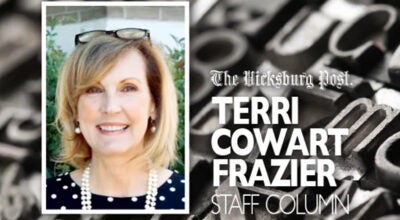Options aplenty to cover patches in the yard
Published 12:05 am Sunday, April 13, 2014
There used to be a couple of those “old sayings” about carpenters and plumbers.
At their own houses, carpenters’ front steps always needed repairs and plumbers had leaking faucets. The gist was they were so busy fixing other folks’ stuff they didn’t have time to fix their own.
Or maybe they merely had their fill and didn’t care to do more of the same at home. I understand because I’ve never had a pretty lawn and it doesn’t bother me. I admire gorgeous lawns and those who care; I just don’t. However, I don’t like bare areas and I’m getting some of those. And I know why. My grass is common Bermuda and it was here before me. Bermudagrass is cheap, tough and can be cut as low as any mower blade will go. But Bermudagrass insists on plenty of sun, more sun than our other turf species. Build a house, plant some trees to the south and west and eventually, oops, bare spots.
The solution to my yard bare spots is simple, though not easy nor cheap. A few weeks back I wrote of broom sedge out this way being a sure indicator of acid soil begging for lime. And which grass can we grow here that adores real acid dirt and gets by on a little less than full sun? Centipede. Yep, I need to get centipede started in the bare spots and let it spread as the Bermuda fades from a touch of shade.
Like our other lawn grasses, centipede is not native to Mississippi or even the U.S. And it’s understandable why we have no grass to call our very own. This corner of the world was completely covered in trees for eons. No sunlight to the ground means no perennial grasses. Centipede was the last of our southern turfs to come stateside, brought in on purpose from China in 1918. Zoysia grass was also an intentional import from Asia in the late 1800s. Bermuda grass got here by accident in the mid-1700s from Africa. St. Augustine grass has sort of a blurry American history. It is a non-native first found growing wild in South Carolina in 1788 and probably got here unplanned from the West Indies.
Again, none of our turf grasses will grow in pure shade. The ones that tolerate the most shading are St. Augustine and Zoysia. They can get by on a half day of sun or all day filtered sunlight coming through tall spaced out trees with scattered limbs. But they, too, prefer lots of sun. Centipede ranks next for enduring less sun than it really wants. And Bermudagrass simply will not participate out of the sun.
All our grasses but centipede do best in a slightly acid soil, around pH 6.0. Centipede is addicted to acidity, needing slightly above to well below pH 5.0. I say treat centipede like blueberry plants and azaleas. Don’t let any of those three even sniff a bag of lime or see a shovelful of wood ashes.
•
Terry Rector writes for the Warren County Soil and Water Conservation District, 601-636-7679 ext. 3.





